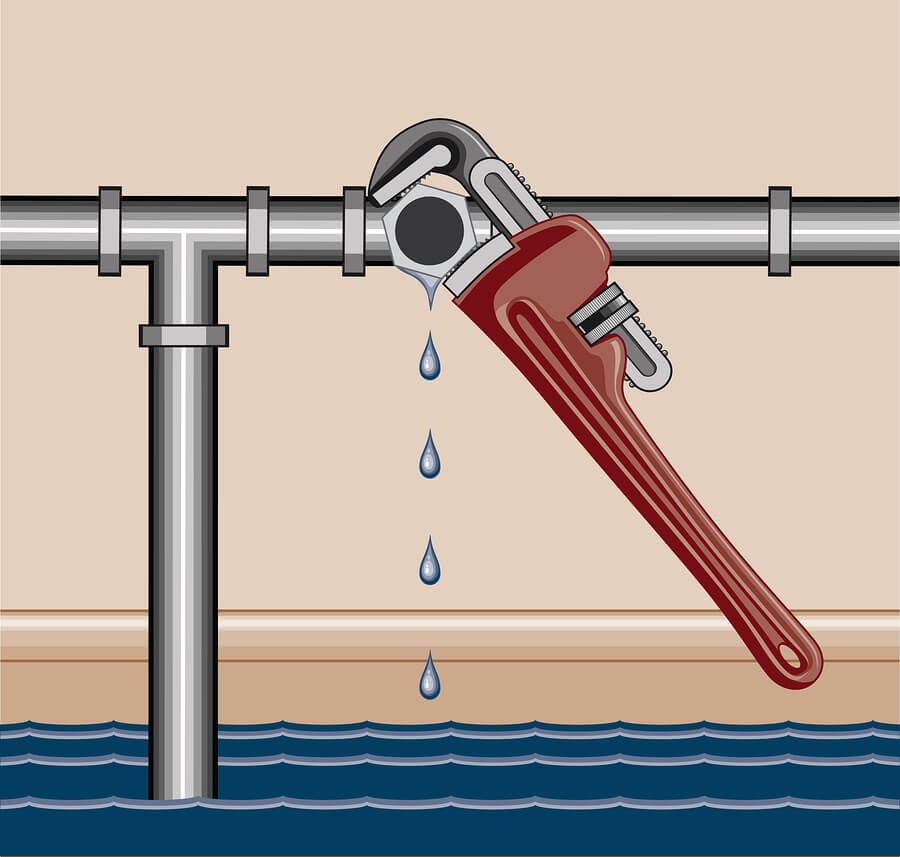The Home's Most Typical Leak Factors: Investigation
The Home's Most Typical Leak Factors: Investigation
Blog Article
On this page in the next paragraph you might get a lot of extremely good tips pertaining to Top Causes of Home Water Leaks.

Leaks not only create waste of water yet can additionally trigger unneeded damages to your home and also advertise undesirable natural growth. Unfortunately, water leakages might go unnoticed considering that most of the pipework in our home is hidden. By comprehending as well as looking for everyday scenarios that cause leaks, you can safeguard your home from future leakages and also unneeded damage. Today, we will certainly check out six leak causes that may be triggering your pipelines to trickle.
Encroaching roots
The majority of water leaks begin outside the home rather than inside it. You might notice damp spots or sinkholes in your lawn, and that could indicate that tree roots are getting into water lines triggering water to permeate out.
Rusty water supply
As time passes by, your plumbing system ages and deterioration such as corrosion may begin eating away the pipelines. This might be the cause of staining or warping on your pipes. This calls for an inspection with your plumber immediately. If our plumbing system is old, think about replacing the pipelines considering that they are at a higher risk of deterioration than the more recent versions.
Malfunctioning Pipeline Joints
The point at which your pipelines connect is often the weakest link in the waterline. Pipeline joints can wear away in time, resulting in water leakages. The majority of pipe joints are not easily visible. If you have noisy pipelines that make ticking or banging noises, particularly when the hot water is turned on, your pipe joints are probably under a lot of stress. It is recommended to have your plumber examine your system annually.
Instantaneous temperature level changes.
Severe temperature adjustments in our pipelines can trigger them to broaden and also get suddenly. This expansion and tightening may cause cracks in the pipelines, specifically if the temperature level are below freezing. It would be best if you watched on how your plumbing works. The existence of the formerly discussed circumstances often suggests a high threat.
Poor Water Connectors
Sometimes, a leak can be triggered by loosened hose pipes and pipes that supply your appliances. Usually, shifting is what triggers the loosened water Links. You could find when it comes to a cleaning equipment, a tube may spring a leakage because of shaking during the spin cycle. In case of a water connections leak, you may see water running straight from the supply line or pools around your appliances.
Obstructed Drains
Blocked drains pipes could be bothersome and inconveniencing, but they can often wind up causing an overflow resulting in rupture pipes. Keep getting rid of any type of materials that might decrease your drains that might block them to prevent such inconveniences.
All the above are root causes of leaks but not all water leaks result from plumbing leaks; some leaks may come from roofing system leakages. All leaks should be repaired instantly to prevent water damages.
Leakages not just cause waste of water yet can also cause unnecessary damages to your house and also advertise unwanted natural growth. By recognizing and looking for daily situations that cause leakages, you can secure your house from future leaks and also unnecessary damages. Today, we will certainly look at 6 leak triggers that may be triggering your pipes to drip.
At times, a leak can be triggered by loose hose pipes as well as pipelines that supply your home appliances. In situation of a water links leakage, you may notice water running straight from the supply line or pools around your appliances.
How To Check For Water Leak In Your Home
How To Check for Leaks
The average household's leaks can account for nearly 10,000 gallons of water wasted every year and ten percent of homes have leaks that waste 90 gallons or more per day. Common types of leaks found in the home are worn toilet flappers, dripping faucets, and other leaking valves. These types of leaks are often easy to fix, requiring only a few tools and hardware that can pay for themselves in water savings. Fixing easily corrected household water leaks can save homeowners about 10 percent on their water bills.
To check for leaks in your home, you first need to determine whether you're wasting water and then identify the source of the leak. Here are some tips for finding leaks:
Take a look at your water usage during a colder month, such as January or February. If a family of four exceeds 12,000 gallons per month, there are serious leaks.
Check your water meter before and after a two-hour period when no water is being used. If the meter changes at all, you probably have a leak.
Identify toilet leaks by placing a drop of food coloring in the toilet tank. If any color shows up in the bowl after 10 minutes, you have a leak. (Be sure to flush immediately after the experiment to avoid staining the tank.)
Examine faucet gaskets and pipe fittings for any water on the outside of the pipe to check for surface leaks.
Undetected water leaks can happen without the home or business owner even realizing. If you suspect a water leak, but not able to find the source. It is time to contact a professional water leak detection service, The Leak Doctor.
How To Find a Water Leak In Your Home
https://www.leakdoctor.com/blog/How-To-Check-For-Water-Leak-In-Your-Home_AE197.html

Do you like reading about Most Common Causes of Leaky Pipes? Create a remark further down. We will be delighted to see your thoughts about this write-up. We are looking forward that you visit us again in the near future. Appreciated our piece? Please share it. Let others locate it. Many thanks for going through it.
Book Now Report this page